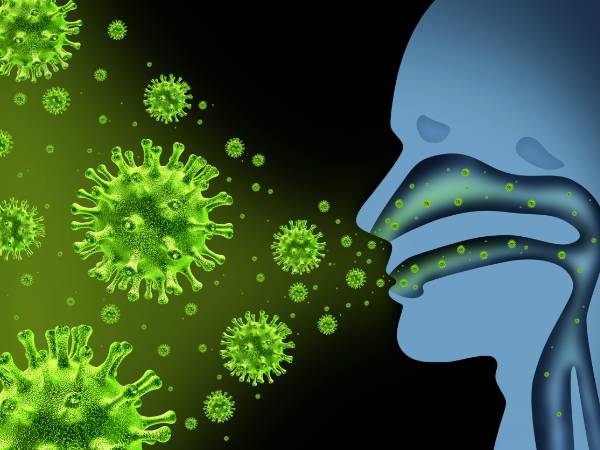Health
oi-Shivangi Karn
on July 22, 2020
Since the COVID-19 spread, the foremost and the mandatory advice given out by the government is ‘wear a mask’ in all the public places and every time when you step out of the house. This is because coronavirus mainly spreads when an infected person coughs or sneezes. The large air droplets that come out from their mouth enter into another person’s mucus membranes (eyes, nose and mouth) and cause them a direct infection.
Respiratory infections also spread when the air droplets settle down on objects or fomites and contaminate others when they touch those objects and then touch their mouth, nose or eyes. Large droplets are visible while small droplets (aerosols) are invisible to the naked eyes. The aerosols remain suspended in the air for a long time and spread when someone breathes them.
This is the reason why governments have implemented social distancing and changed ways of interaction between people to prevent the spread of the COVID-19. Though it was a good step in the beginning, it cannot completely explain how coronavirus spreads quickly. This is where fluid mechanics comes to picture.

Study Based On Fluid Mechanics
According to a report published in the Journal of Fluid Mechanics in 2014 and Experiments in Fluids in 2016, the air droplets that come out from the mouth do not travel independently on their own routes, but are held and carried much further by a warm, moist turbulent gas cloud. [1]
The droplets not only come out by coughing or sneezing, but also when a person speaks or, raise their voices. The size of the droplets remains the same and just the amount increases or decreases according to the action a person performs (speak, cough or sneeze).
According to an infectious disease aerobiologist Donald Milton, a person doesn’t have to cough or sneeze to spread the virus to others as the virus are present even in the small aerosols which the infected person breathes out or droplets that come out when they speak. However, it is still not clear whether these aerosols can cause COVID-19. [2]

How COVID-19 Is Linked To Fluid Mechanics
When fluid mechanics was combined with expiratory events of an infected person, the result shows that the air droplets after a sneeze or cough get distorted by the complex air and break into many small pieces that suspend in the air and contaminate them. These small particles are then carried out to further distances compared to larger ones.
The temperature, flow flew and humidity are also some of the factors that decide the distance up to which the droplets can travel. In the result, it was found that the infected droplets can travel to around seven meters (20 feet), considering that they can be travelled much further due to ventilation systems of the building. This challenges the norms of WHO and CDC that mention maintaining a social distancing of only 3-6 feet.

To Conclude:
The message behind this new research is that even wearing a mask and maintaining six feet distance cannot completely limit the spread of the virus as the droplets can release a gas cloud and travel much further- more than 7-8 metres. Understanding fluid mechanics is crucial to stop the spread of the virus as it may help in improving the design and structure of ventilation systems in the building, especially where COVID-19 patients are treated or a person is quarantined.
GET THE BEST BOLDSKY STORIES!
Allow Notifications
You have already subscribed
Story first published: Wednesday, July 22, 2020, 7:30 [IST]
Source:










